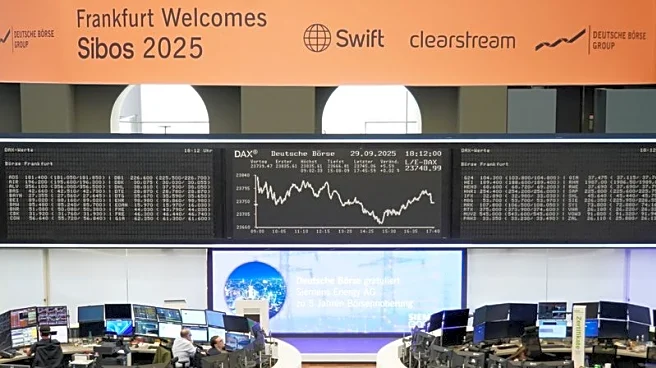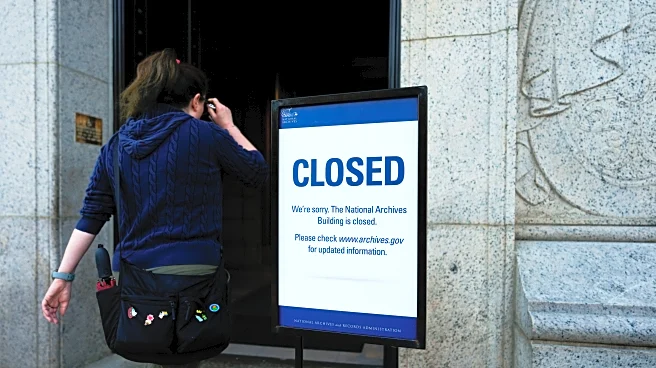What's Happening?
The ongoing federal government shutdown in the United States, under President Trump's administration, is projected to have significant economic repercussions. Analysts from EY Parthenon estimate that each week of the shutdown could reduce U.S. GDP growth by 0.1 percentage points, equating to a $7 billion weekly economic hit. The shutdown affects various sectors, including furloughed federal workers, delayed government procurement, and decreased demand. A White House memo from the Council of Economic Advisers suggests the economic impact could be even more severe, potentially resulting in a $15 billion weekly loss in GDP and an additional 43,000 unemployed workers if the shutdown persists for a month.
Why It's Important?
The shutdown's economic impact is profound, affecting not only GDP growth but also consumer spending, which could decrease by $30 billion if the shutdown lasts a month. The disruption extends to social security, air travel, and nutritional support programs, particularly affecting women with infant children. The shutdown also poses challenges for financial markets and private sector confidence, delaying the release of crucial economic data needed by policymakers, investors, and business leaders. The last significant shutdown, lasting 35 days from December 2018 to January 2019, cost the U.S. economy at least $11 billion, highlighting the potential for long-term economic damage.
What's Next?
If the shutdown continues, the economic effects will intensify, with potential long-term consequences for the U.S. economy. The EY Parthenon analysis notes that while some damage may be offset by backpay for furloughed workers and a rebound in activity post-reopening, the overall impact could complicate the Federal Reserve's policy decisions and investor strategies. The situation calls for urgent resolution to prevent further economic decline and restore confidence in the government's ability to manage fiscal responsibilities.












